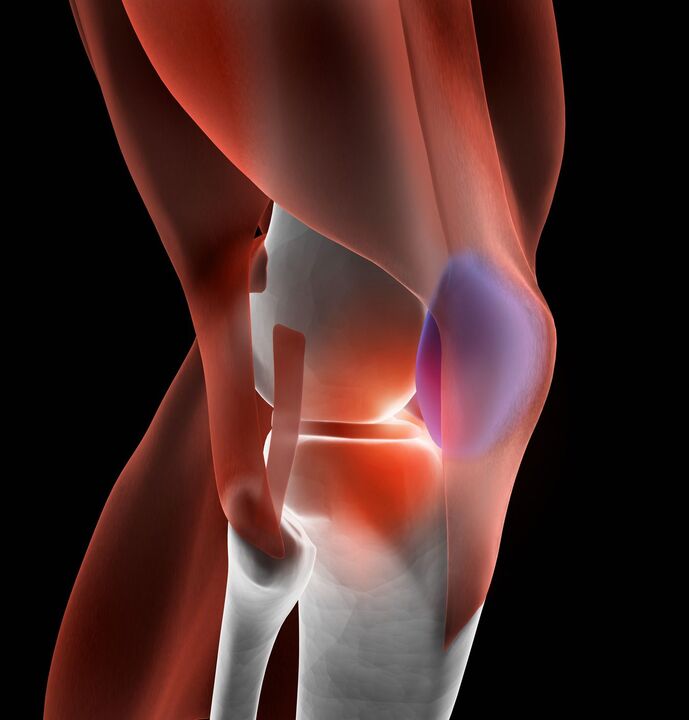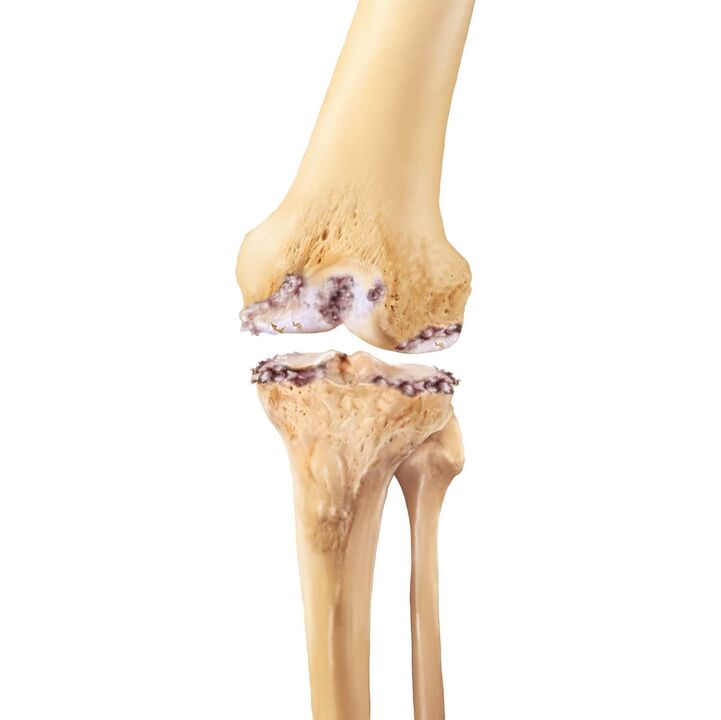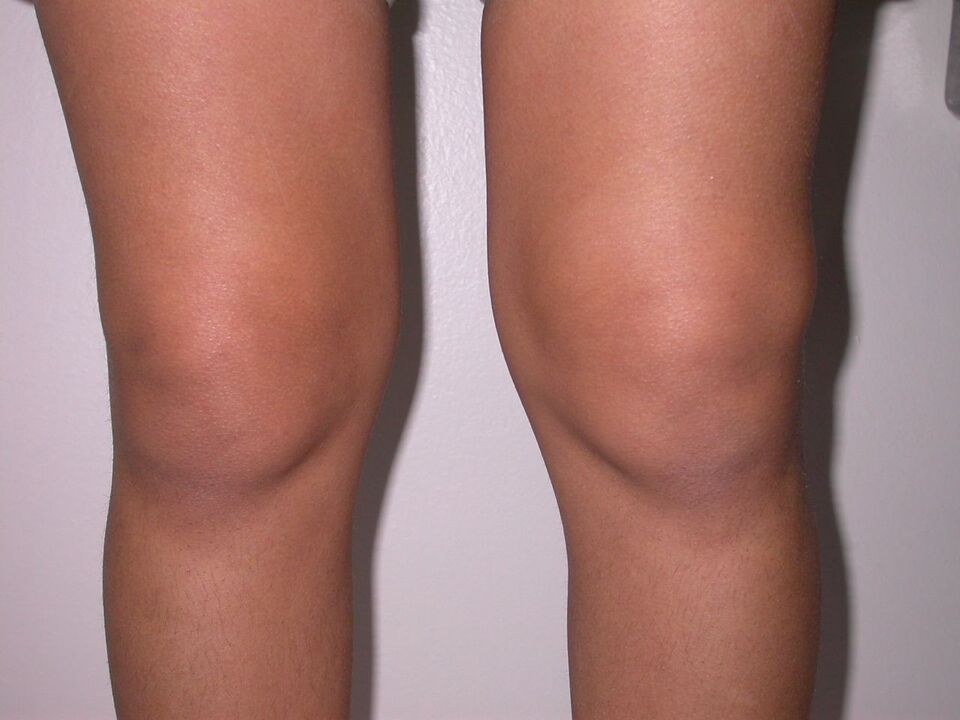
Without proper treatment, conditions such as knee arthropathy can lead to a person's disability. This is due to a violation of the motor function of the joint and the entire leg. To prevent this from happening, you should seek medical attention as soon as you develop symptoms of the disease.
what is this disease
Knee arthropathy is an arthropathy of the knee joint. This is one of the subtypes of joint disease and is located in one or both knees. This pathology is a degenerative dystrophic process. This means that there is destruction of cartilage tissue in the joints and is gradually involved in the pathological process of bone tissue.
why and how
What is knee joint disease? This is a violation of all functions of the knee, which occurs due to pathological changes in the cartilage tissue. The disease occurs in middle age - ie after the age of 40-45 (primary). However, there are also cases of this disease in younger patients - this is usually post-traumatic (secondary) arthropathy.
Bilateral knee arthropathy is the most common pathology in the elderly. This is because these joints carry a lot of daily loads. As a result, the cartilage begins to gradually wear down and lose its physiological properties.

The disease refers to multiple causes. What does it mean? Such diseases develop under the influence of multiple factors at the same time. What directly causes knee disease - knee disease?
table. Causes and mechanisms of pathological development:
| reason | what happened |
|---|---|
| Mechanical factors are the most important. | Degenerative changes due to daily microtrauma or some kind of major injury. As a result, the cartilage in different parts of the cartilage is destroyed. |
| Violation of microcirculation. | Deterioration of cartilage tissue nutrition leads to loss of elasticity and contraction. |
| Metabolic disorders in cartilage tissue. | The amount of glucosamine and chondroitin, the main components of cartilage, is reduced. |
| Changes in joint fluid structure. | It loses its lubricating function, and the cartilage rubs against the bone and collapses. |
All of these together lead to the development of joint pathology.
main performance
What are the main symptoms of knee joint disease?
The main distinguishing feature of arthritis is the gradual, slow progression of symptoms:
- The first manifestation of joint disease is pain. At first, patients felt pain only after prolonged weight-bearing—long walks. In a calm state, the pain disappeared quickly. Progression of the disease leads to earlier and earlier pain sensations. In the final stage, the patient cannot even stand.
- Another characteristic symptom is the onset of pain. What's this? This is the pain that occurs at the beginning of the movement. In the first stage, this pain appears after waking up in the morning. Then they appear at the beginning of each action.
- The opposite symptom is nighttime pain. It develops during sleep due to pressure inside the bones. This feeling will disappear during walking.
- In the second stage, reactive synovitis usually develops. This is inflammation of the joint pocket that occurs due to cartilage destruction. What does knee joint disease and synovitis look like? The knee is swollen and the skin is hot to the touch. Sometimes a patellar bulge occurs.
- The next classic symptom is crepitus. The term is known as the crunch heard at a distance while performing movements in the joint. At first it was barely audible, but in later stages it became very loud. It can be heard throughout the movement.
- In the final stage, a deformity of the knee joint is formed. This is due to the involvement of the bone structure of the joint in the pathological process. Growths appear on the bones, deforming the knee - this has deformed the joint. As a result, the bones are displaced axially, the legs are shortened, and the knees are turned to one side (photo).

A complication of knee arthropathy is the development of contractures. This is due to bone fusion or muscle compaction resulting in a complete cessation of joint movement. As a result, muscular dystrophy develops due to the small amount of exercise.
diagnosis method
The diagnosis of knee joint disease is based on the following facts:
- History of the disease - how symptoms developed, the dynamics of the patient's complaints;
- characteristic symptoms;
- X-ray study.
For knee arthropathy, X-rays are taken in three projections.
Arthropathy is characterized by changes in:
- Decreased joint lumen is the first sign of disease; in stage 3, there is little clearance;
- In the second stage, osteophytes can be detected;
- Subchondral sclerosis is also a specific sign that manifests as compaction of the ends of the bones adjacent to the cartilage.
If the diagnosis is in doubt, computerized or magnetic resonance imaging is performed. Doctors evaluate the results and assign one degree or another of arthropathy. The experts in this video will walk you through the diagnostic methods and results in detail.
type of treatment
Comprehensive treatment of knee joint disease is required. A combination of different methods can significantly slow down the process of cartilage degeneration.
Conservative treatment can be done on an outpatient basis. If surgery is required, the patient is sent to the hospital for a medical history. It records the procedure and results of the surgery.
diet
First, the patient was prescribed a certain diet. With the help of food, you can improve the condition of cartilage tissue. And rejecting certain products restores blood circulation in the joint area.
What is recommended to include in the diet of people with arthritis:
- First, these are products that contain a lot of protein and collagen. These include marine fish, meat, and jellies. They need to be eaten every day.
- Products that contain fiber. These are fruits and vegetables. Also recommended for daily use.

Fatty meat and fish, pastries, sweets, alcoholic and carbonated beverages should be excluded from the diet. Not only will this improve blood circulation, but it will also allow you to shed excess pounds.
drug
Conservative treatment is based on medication. The action of the drug is aimed at eliminating the pathological process and the symptoms it manifests.
All medicines are available at pharmacies. They are quite expensive, but the drugs must be taken long-term.
Medicines are prescribed by professionals and cannot be self-medicated.
physiotherapy
Physical therapy procedures are required in all stages of arthropathy. They are designed to relieve pain, restore blood circulation in the joint area, and slow the process of malnutrition.
The most common methods are:
- UHF;
- magnetic therapy;
- ozone therapy;
- Bath - Radon, Hydrogen Sulfide.
This treatment is done in a clinic or nursing home.

physiotherapy
Initially, patients were prescribed measures to reduce the load on the affected knee. This is achieved through the use of canes, compression stockings and bandages. For severe pain syndromes, the knee needs to be immobilized for several days.
As the condition improved, therapeutic exercises were prescribed. It is first performed under the guidance of a sports therapist, and then you can perform gymnastics at home.
Surgical treatment
Knee arthropathy is the most common pathology requiring surgical intervention.
Depending on the condition of the joint and its degree of damage, different types of manipulations are used:
- denervated. This surgery is rarely used - mostly in older patients with severe pain. The essence of the intervention is to cut the nerve to the joint. The effects of this intervention can last for years.
- Intraosseous decompression. It is most often performed in conjunction with arthropathy. Its essence is to reduce the load on diseased joints. The spongy material of the bone adjacent to the cartilage is destroyed by drilling.
- Osteotomy. It is also designed to reduce the load on the joints. The effect is achieved by dissecting the bone directly at the joint head.
- Internal prosthesis. It is used to completely destroy cartilage tissue. The joints are replaced by metal joints.
After each type of surgery, restorative treatment is required. Knee arthropathy of the knee can be disabling when not diagnosed and treated properly.























